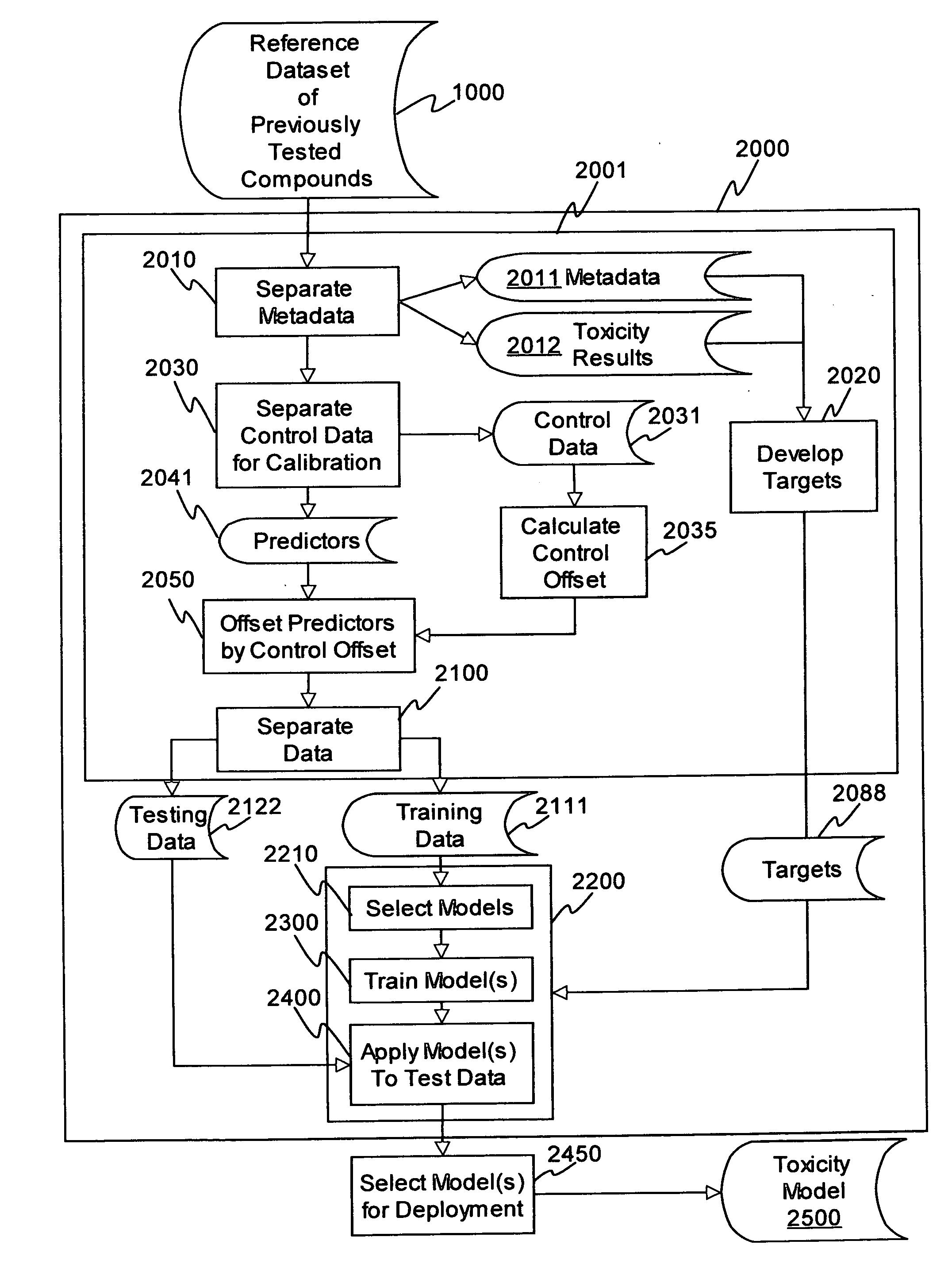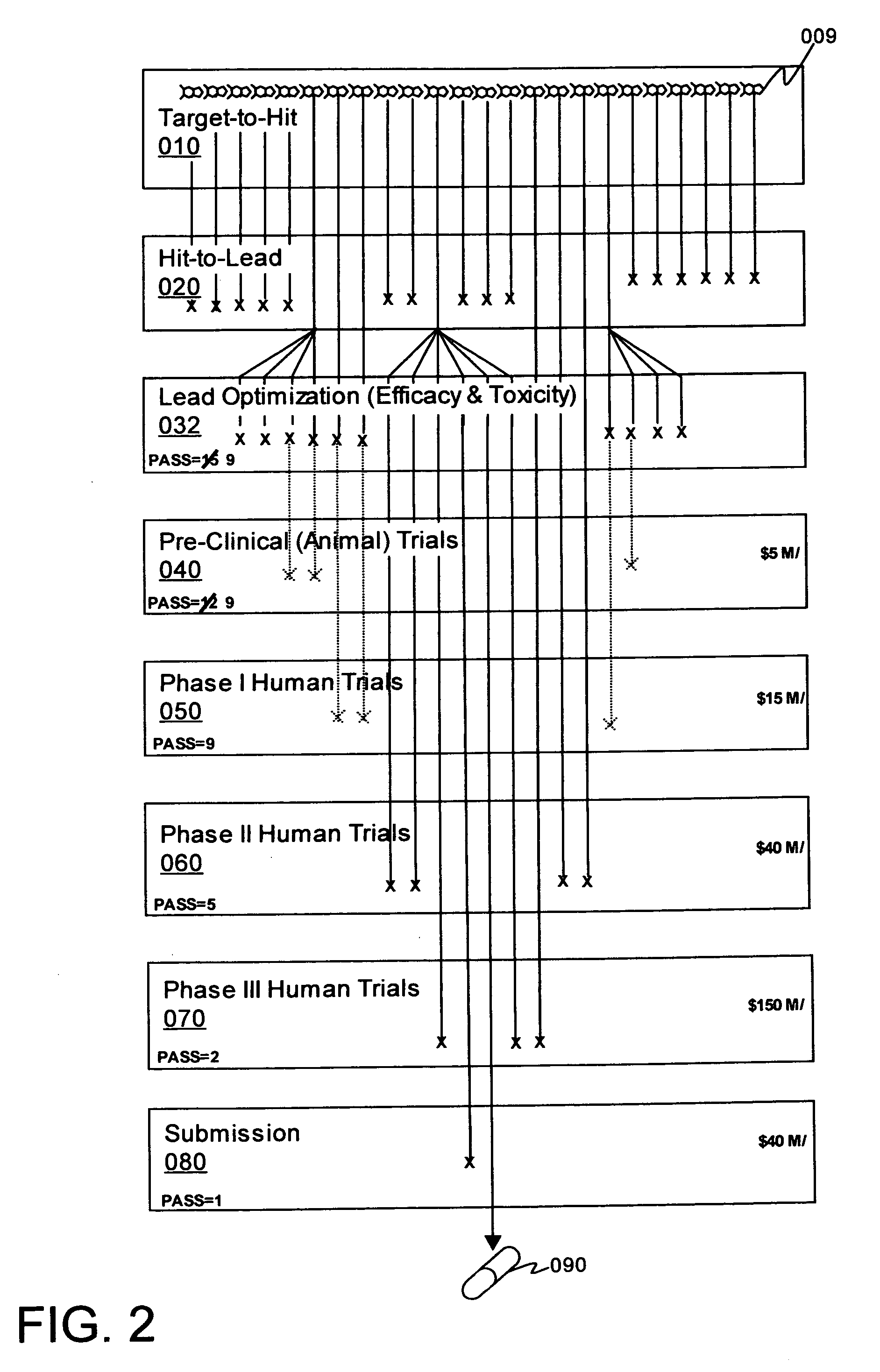Method of predicting toxicity for chemical compounds
a chemical compound and toxicity technology, applied in the field of predicting the toxicity of chemical compounds, can solve the problems of undeveloped high-throughput techniques for similarly evaluating the toxic effects, the need to discontinue cme, and the side effect of being almost 100% lethal, etc., and achieve the effect of evaluating the toxicity of a chemical compound
- Summary
- Abstract
- Description
- Claims
- Application Information
AI Technical Summary
Benefits of technology
Problems solved by technology
Method used
Image
Examples
Embodiment Construction
I. Introduction
[0042]The invention disclosed is a method for evaluating candidate molecular entities (CMEs) (generally new chemical compounds, but which may include known compounds as well) for toxicity or other adverse biological effects. The invention makes it possible to rapidly and efficiently evaluate toxicity for a large number of CMEs. Therefore, these methods can be used as part of a drug discovery protocol to determine which potential drug candidates should progress to early-stage animal testing, and which might be eliminated early in the process.
[0043]One such research protocol would include evaluation of the compound toxicity alongside compound efficacy, as was suggested in FIGS. 2 and 4. An example of this is illustrated in FIG. 5. In this figure, the initial step 510 is to identify the elements or steps of a research protocol, such as the sequence of trials shown in FIGS. 1 and 2. In the next step 520, the CMEs to be tested are selected. These may be a random assortment...
PUM
 Login to View More
Login to View More Abstract
Description
Claims
Application Information
 Login to View More
Login to View More - R&D
- Intellectual Property
- Life Sciences
- Materials
- Tech Scout
- Unparalleled Data Quality
- Higher Quality Content
- 60% Fewer Hallucinations
Browse by: Latest US Patents, China's latest patents, Technical Efficacy Thesaurus, Application Domain, Technology Topic, Popular Technical Reports.
© 2025 PatSnap. All rights reserved.Legal|Privacy policy|Modern Slavery Act Transparency Statement|Sitemap|About US| Contact US: help@patsnap.com



